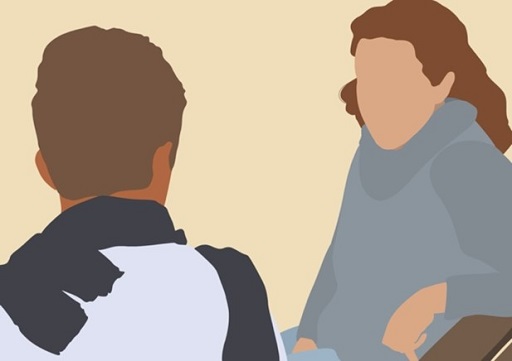Use 'Print preview' to check the number of pages and printer settings.
Print functionality varies between browsers.
Printable page generated Saturday, 22 November 2025, 10:42 AM
4: Professionals’ and practitioners’ perspectives of UASC’s care of each other
4: Professionals’ and practitioners’ perspectives of UASC’s care of each other
In terms of Unaccompanied Asylum-Seeking Children (UASC), the focus in the literature has mainly been on the relationship between adults and young people, and this is evident in research across a number of different countries around the world (see Crea et al., 2018; De Graeve, 2015; Martinsson and Reimers, 2020). One line of enquiry within the English context has been the relationship between social care professionals and young people and the different forms of practice or ways of working. Kohli (2006) collected data with social workers and through an analysis of their descriptions of how they relate to UASC created three ‘Domains of practice’. They are:
- Domain of cohesion (the humanitarians): this is where assistance meant meeting practical needs and supporting day-to-day needs such as shelter, food, money, schooling, medical support and welfare advice. This was a pragmatic approach. They were aware that the young people perceived them as being in a position of authority who could both help and hinder their progress.
- Domain of connection (the witness): this is where professionals sought to understand the emotional worlds of the young people, often bearing witness to trauma and engaging with the emotional elements. This was also recognised as an emotional challenge and, in order to cope, moved towards the other positions of ‘cohesion’ or ‘coherence’.
- Domain of coherence (the confederates): this is where the young person and social worker co-construct a new start in the UK, enabling a flexible and enduring relationship. The experiences of UASC were framed within similar frames as other children experiencing adverse situations. The relationship straddled a line between professional help and friendship. They viewed young people’s stories as wide-ranging and complex, and felt comfortable being ‘ethically subversive’ by protecting parts of stories to immigration authorities.
 Pause for reflection: Which domain am I?
Pause for reflection: Which domain am I?
When you look at Kohli’s ‘Domains of practice’, do you see yourself in any of these categories? Perhaps you see yourself as straddling across more than one domain?
Make some notes in the box below.
Others have argued that the boundaries between these categories are fluid, and rather than adopting a general style, professional boundaries are highly influenced by a range of factors such as the interpersonal relationship between the professional and the young people (Hadwin, 2022). Devenney (2019) has characterised the relationship between social care professionals and UASC as co-navigators. In other words, Devenney saw professionals as helping young people steer a course through an unsettled, ‘oppressive’ and tumultuous social and asylum environment. Sometimes, this led to the blurring of the relationship between friendship and a professional relationship.
 Activity 4.1: Some Do’s and Don’ts
Activity 4.1: Some Do’s and Don’ts
In the box below, list three ‘Do’s’ and three ‘Don’ts’ when working with UASC.
Discussion
In her evidence-based research, qualified social worker and social work trainer Deborah Hadwin (2022) provides recommendations for social care professionals and practitioners in various roles. Some of her suggestions are:
Do:
- Reflect on your own values and personal experience and how this may influence your relationship with unaccompanied young people.
- Think about how the structural and contextual issues impact on the young person and how this might affect your ability to care.
- Think about any biases you have developed either coming into the role or over time.
Don’t:
- Engage in banter with colleagues about age, thereby creating arena of acceptable distrust
- Allow assumptions about different nationalities drive the focus on your care relationship
- Allow doubts about young people’s truth and credibility influence your approach to care.
4.1: Adults’ views on children’s care of each other
One of the reasons the Children Caring on the Move project began was because there was a gap in the evidence about our understanding of young people’s care of each other. We knew from our pilot work that social care practitioners understood the value of young people’s friendships and, to a lesser extent, saw care relationships as important, but had not really brought that to the foreground in their own practice (Rosen et al., 2021). Consequently, we sought to understand how UASC or ‘separated’ child migrants, and those involved in the care of separated children, make sense of and value care relationships and caring practices.
In this next activity, you are going to be introduced to Brandon. For ethical reasons we have been deliberately vague around the details of his role, but we can tell you that Brandon is a qualified social worker for a Local Authority in England. At the time of the interview, he was working in a managerial role, overseeing other social workers who had direct connection to UASC. Brandon is not his real name.
 Activity 4.2: Is it care? Or something else?
Activity 4.2: Is it care? Or something else?
Read the quote below from a social worker we have named ‘Brandon’ (the dots reflect short pauses in his speech). During his interview, Brandon was asked the following questions:
- ‘Would you recount a situation (if you know of one) in which separated child migrants take care of each other?’
- ‘What are your views on children’s care of each other?’
Brandon initially described formal care processes such as placing UASC with foster carers or older siblings. When asked about more informal care relationships, he replied:
‘Informally, I mean, not really, because they’ll be looked after by us, so we wouldn’t approve young people to look after…it’s more indirectly through mentoring and… you more often find that once they start going to school, and going to the [name of charity], they just end up associating with other young people from their country, and they develop kind of informal support networks that way. So yeah, I wouldn’t say caring, it’s more informally supporting each other, just through peer mentoring really. …I wouldn’t say caring for… well, caring for each other in the sense that they’re looking out for each other, but not taking on a caring role, you know, doing the caring in a sense that we associate with a social work perspective.’
Now you have read Brandon’s comments, answer the questions, making notes in the box below:
- How does Brandon frame young people’s care of each other? What words does he use to try and make sense of young people’s relationships?
- Do you agree or disagree with his perspective, in what ways?
- How does Brandon’s approach to children’s care of each other reflect or contradict the concepts of ‘care’ and ‘childhood’ you read about above?
Discussion
One thing you may have noted is the way Brandon wrestles with the notion of ‘care’ when associating this with young people’s relationships to each other. He brings in other terminology such as ‘mentoring’, ‘associating’, ‘supporting’ and ‘networks’. For Brandon, ‘care’ is associated with the formal process of social work practice where care is provided by a parental figure or an adult, such as a foster carer.
Brandon’s quote is also interesting when we return to thinking about what we mean by care. As you read in Section 2, ‘care’ in its broadest definition can encompass caring for others and being cared for by others. Understandably, Brandon also focused on the formal aspects of care because these are highly linked to the procedures and processes in his everyday social work practice. Bowlby (2012) explores the idea of informal care, which is perhaps similar to ‘domains of connection’ or ‘co-navigation’ discussed in Section 2.1. Informal care is linked with the idea, for example, that care is an ethical activity. It may be part of our obligation to others – or be an act of reciprocity. We might also have strong ideas about what is ‘normal’ or ‘appropriate’ forms of informal care. Some care relationships are seen as desirable whilst others are not. Informal care may have an unequal power relationship.
You are now going to read a quote from ‘Lauren’ (again, not her real name). Lauren spent a number of years as a key worker in semi-independent accommodation. She later moved to work in the charity sector. Her talk interweaves both her reflections from her past and her work in the present.
 Activity 4.3: Care in many forms
Activity 4.3: Care in many forms
As you read this quote from Lauren, think about how it contrasts with the approach to care taken by Brandon:
‘[I think that]…the structures of care from the state, so social services, and all of those places that unaccompanied minors receive care from, I think often cloud and make less visible the practices of care that happen between friendships and peer groups. And I think that some of those practices of care are some of the most meaningful and sustaining forms of care in these young people’s lives.
So when I talk with my refugee colleagues who are now kind of early 20s….things like doing translation or interpreting, or spending an hour on the phone with the Jobcentre for a friend, interpreting for them, or filling out someone’s driving licence application and taking it to the Post Office, and doing all of that labour was not identified and recognised as care…I mean, something that happened, again, from my housing memories, is people having friends to stay, and kind of hosting people. That, for me, culturally, I understand that within a framework of care, and providing. And things like those advocacy examples around driving licences and stuff, I understand that as offering care to a friend or a family member. I think, instead, sometimes those behaviours and those actions are not allowed, so they’re seen as bad things, or they’re seen as stuff to hide, where naturally, what’s happening is this kind of inter-relational mutual caring relationship being developed. But often we just don’t know how to talk about them, but they’re really, really meaningful…’
Now you have read Lauren’s comments, answer the questions, making notes in the box below:
- How does Lauren frame young people’s care of each other?
- Do you agree or disagree with Lauren’s perspective, in what ways?
- How does Brandon’s and Lauren’s approach to UASC’s care of each other differ?
- Can you see any of Bowlby’s informal care propositions in this quote?
Discussion
One thing you may have noted is how Lauren suggests that both the State and young people themselves understate features of care. From Lauren’s perspective, care is less about formal procedures or relationships but about everyday activities and practices. It is the very ‘everydayness’ of those activities that leads both adults and the young people to frame them as ‘normal’ or ‘of course’, the thing that they do. This kind of framing of care also reflects the fifth phase of care outlined in Section 2.1 which was described as ‘caring with’ – this type of care was associated with trust and solidarity.
4.2: Section summary
In this section, we have looked at some of the different ways in which UASC’s care of each other might be framed by professionals and social care practitioners. You have had the opportunity to critically reflect on different forms of care and how they linked with theoretical approaches to informal care.
The next section will focus on hearing the voices of the young people who took part in the study.
Now, continue to 5: UASC’s perspectives on care.


